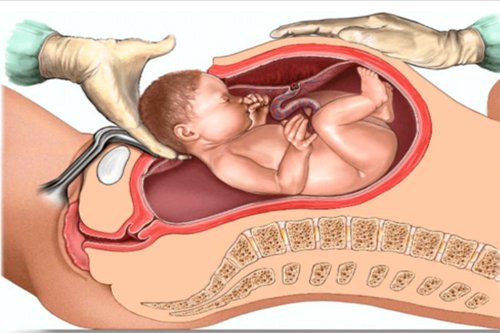Cesarean Section In Nagpur

A Cesarean section (C-section) is a surgical procedure in which a baby is delivered through an incision made in the mother’s abdomen and uterus. This method of childbirth is an alternative to vaginal delivery and is typically performed for medical reasons or when complications arise during pregnancy or labor.
Cesarean sections are important and sometimes life-saving procedures, but they are typically reserved for situations where the health and well-being of the mother or baby are at risk. The decision to perform a C-section is made based on careful consideration of medical factors and discussions between the healthcare team and the expectant parents.
Why do I need a caesarean section?
Fetal Distress: If there are signs that the baby is not tolerating labor well, such as abnormalities in the fetal heart rate, a C-section may be recommended to expedite delivery.
Placenta Previa: When the placenta partially or completely covers the cervix (placenta previa), a vaginal delivery can lead to severe bleeding. In such cases, a C-section is usually recommended.
Umbilical Cord Prolapse: If the umbilical cord slips through the cervix ahead of the baby (cord prolapse), it can become compressed during labor, compromising the baby’s oxygen supply. A C-section may be performed to alleviate this situation.
Previous C-Section: A woman who has had a previous C-section may opt for a repeat C-section for subsequent pregnancies. In some cases, a vaginal birth after a C-section (VBAC) may be considered, depending on factors such as the type of incision used in the previous C-section and the reason for the initial C-section.
Multiple Pregnancies: In the case of twins, triplets, or other multiples, a C-section may be recommended for the safe delivery of the babies.
Maternal Medical Conditions: Certain maternal medical conditions, such as heart disease, active genital herpes infection, or severe preeclampsia, may increase the risk of complications during a vaginal delivery, leading to a recommendation for a C-section.
Labor Progress Issues: In some cases, labor may not progress adequately, and attempts to induce or augment labor may be unsuccessful. A C-section may be recommended if vaginal delivery is not achievable within a reasonable timeframe.
What does the operation involve?
Preparation:
Before the surgery, you will be taken to the operating room, and the medical team will prepare you for the procedure.
An intravenous (IV) line will be inserted to provide fluids and medications.
Anesthesia:
You will be given regional anesthesia, typically in the form of an epidural or spinal block. This numbs the lower part of your body, allowing you to remain awake during the procedure while minimizing pain.
Incision:
A horizontal (transverse) or vertical (midline) incision is made through the abdominal wall, usually just above the pubic hairline.
The incision through the uterus follows, allowing access to the amniotic sac and the baby.
Delivery of the Baby:
The amniotic sac is opened, and the baby is carefully guided out through the incision. The baby’s head is typically delivered first.
The medical team provides necessary support to ensure the baby’s well-being.
Placenta Removal:
After the baby is delivered, the placenta is detached from the uterus and removed.
The medical team examines the uterus and ensures that there is no excessive bleeding.
Closing Incisions:
- The incisions in the uterus and abdominal wall are closed with stitches or staples. The choice of closure method depends on various factors, including the circumstances of the surgery and the healthcare provider’s preference.
Postoperative Care:
- After the surgery, you will be moved to a recovery area to be monitored as the anesthesia wears off.
- Pain management measures are provided, and the medical team will closely monitor your vital signs.
How soon will I recover?
The recovery time after a Cesarean section (C-section) can vary from person to person, and several factors influence the duration of the recovery process. Here are some general guidelines:
Hospital Stay:
- Most women who undergo a C-section stay in the hospital for about 2 to 4 days, depending on the individual circumstances and the hospital’s policies.
Immediate Postoperative Period:
- During the first few days after the surgery, you will be closely monitored for any signs of complications. Pain management and wound care will be provided.
- It’s common to experience some discomfort and pain medications may be prescribed.
Recovery at Home:
- Once discharged from the hospital, it’s essential to follow the postoperative care instructions provided by your healthcare provider.
- Rest is crucial during the early weeks, and you should avoid activities that put stress on the abdominal muscles.
- Support from family or friends can be helpful during this period, especially if you have other children to care for.
Resuming Normal Activities:
- Return to normal activities and exercise should be gradual and guided by your healthcare provider’s recommendations.
- Most women can resume light activities within a few weeks, but it may take several weeks to a few months before you can engage in more strenuous exercises.
